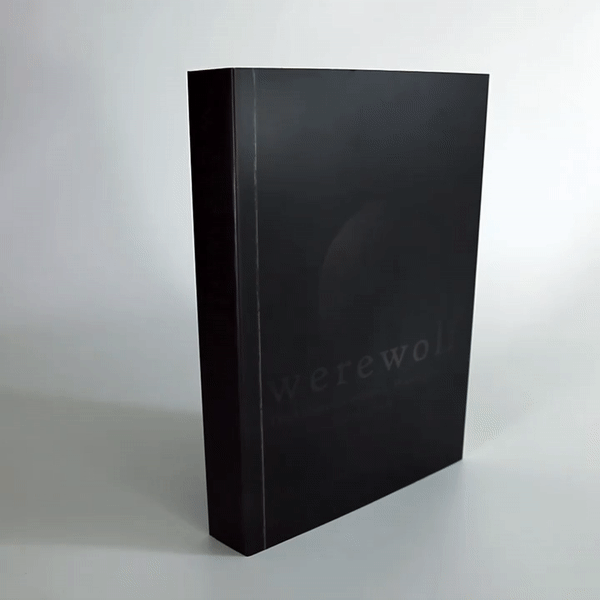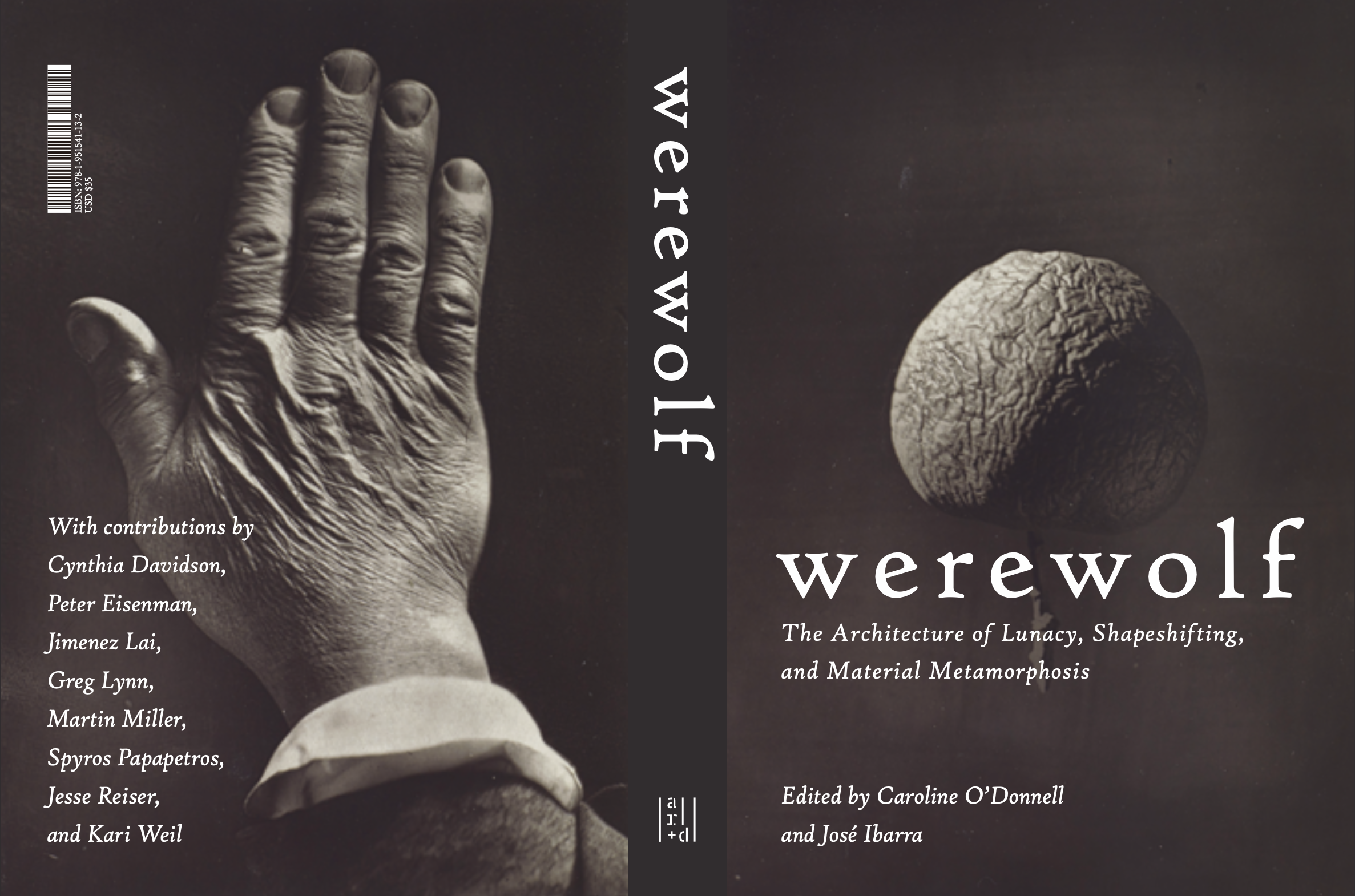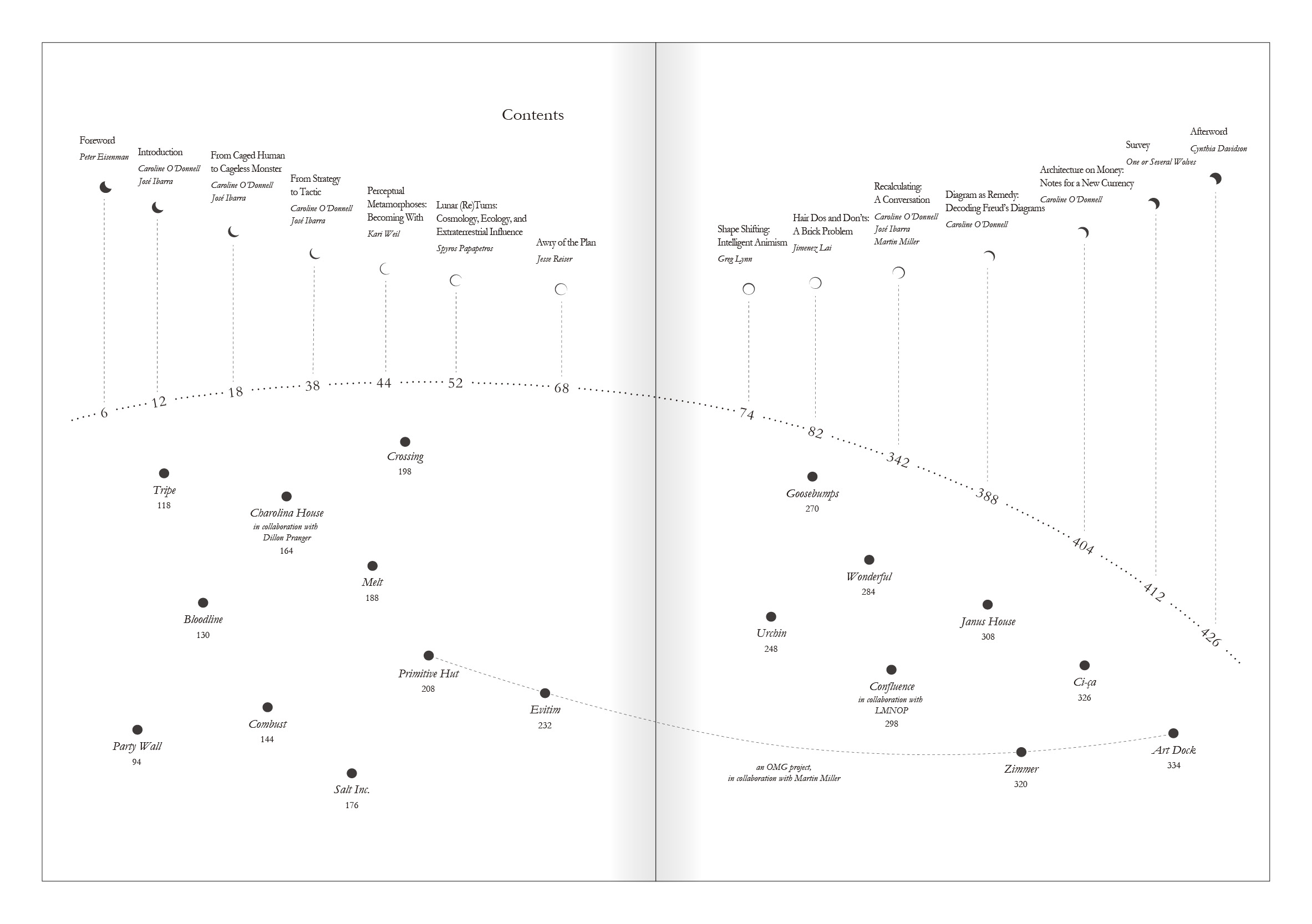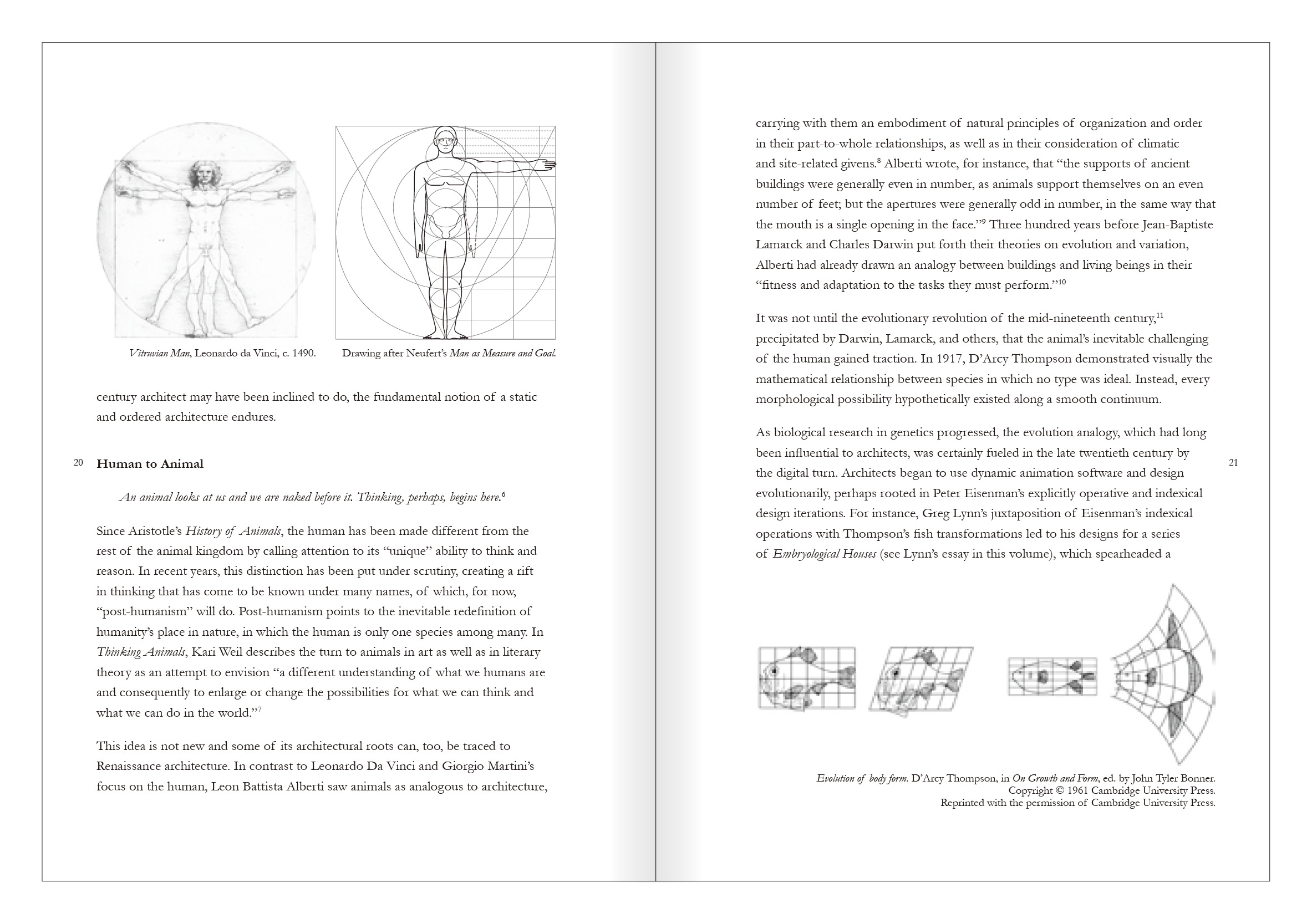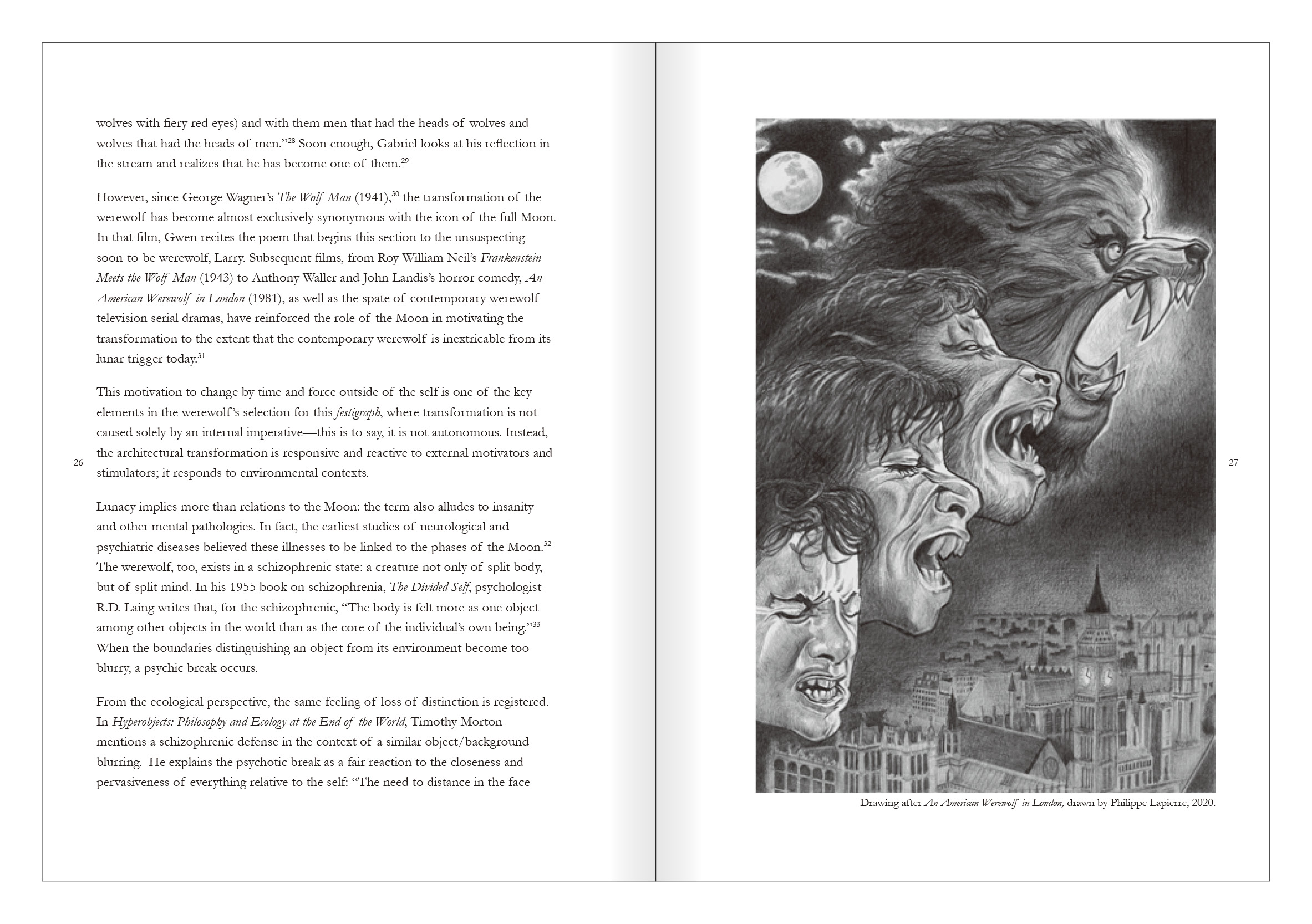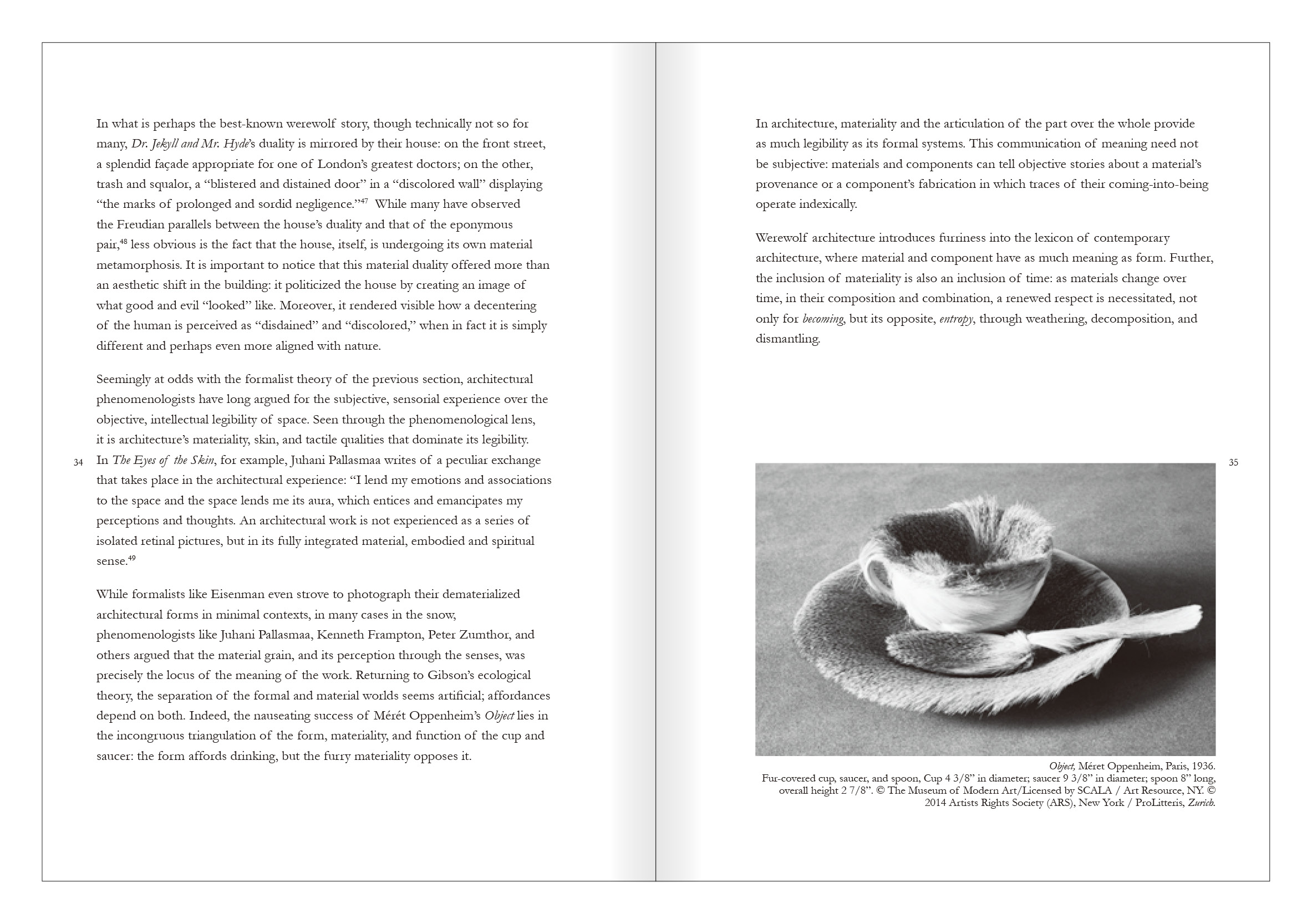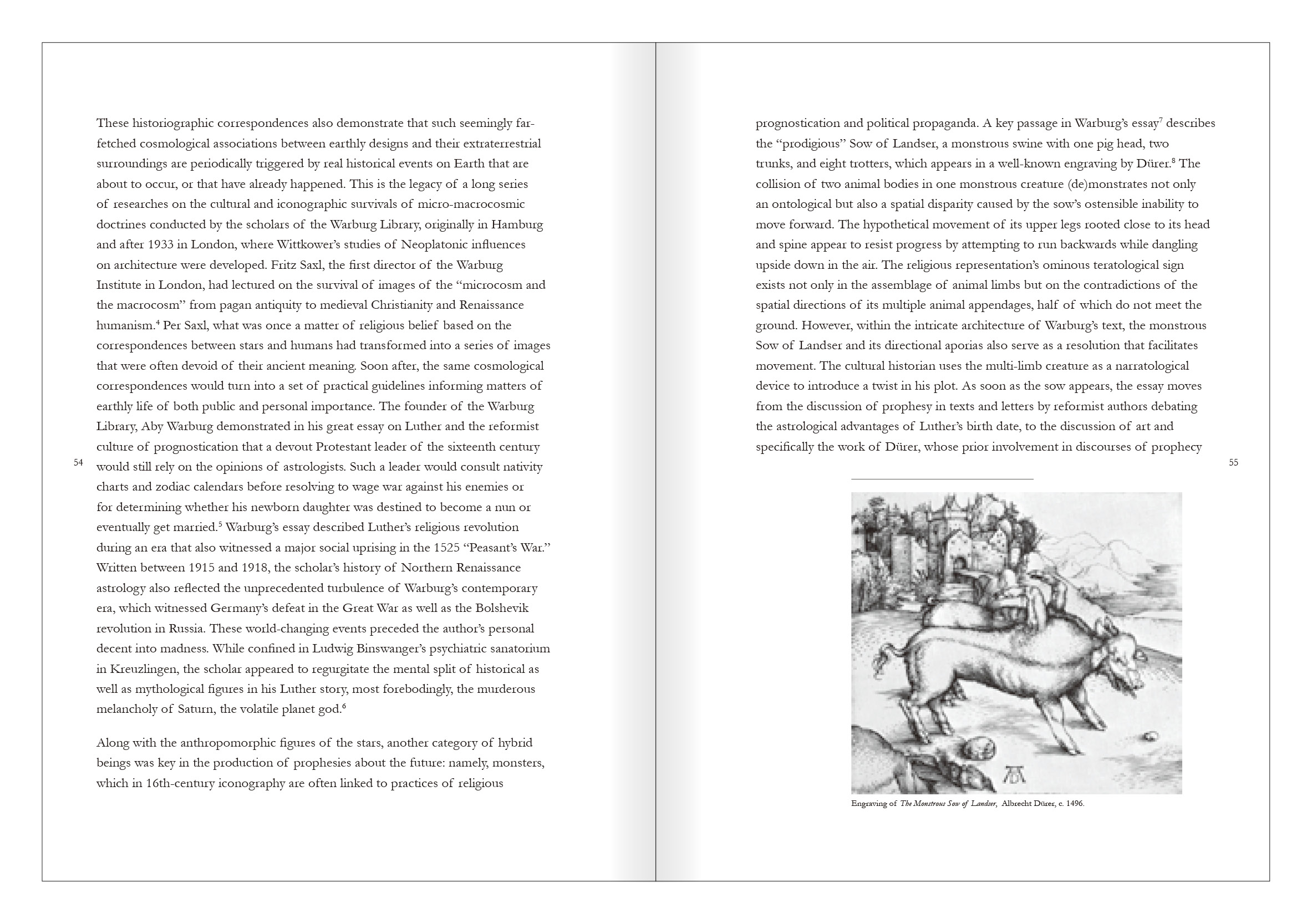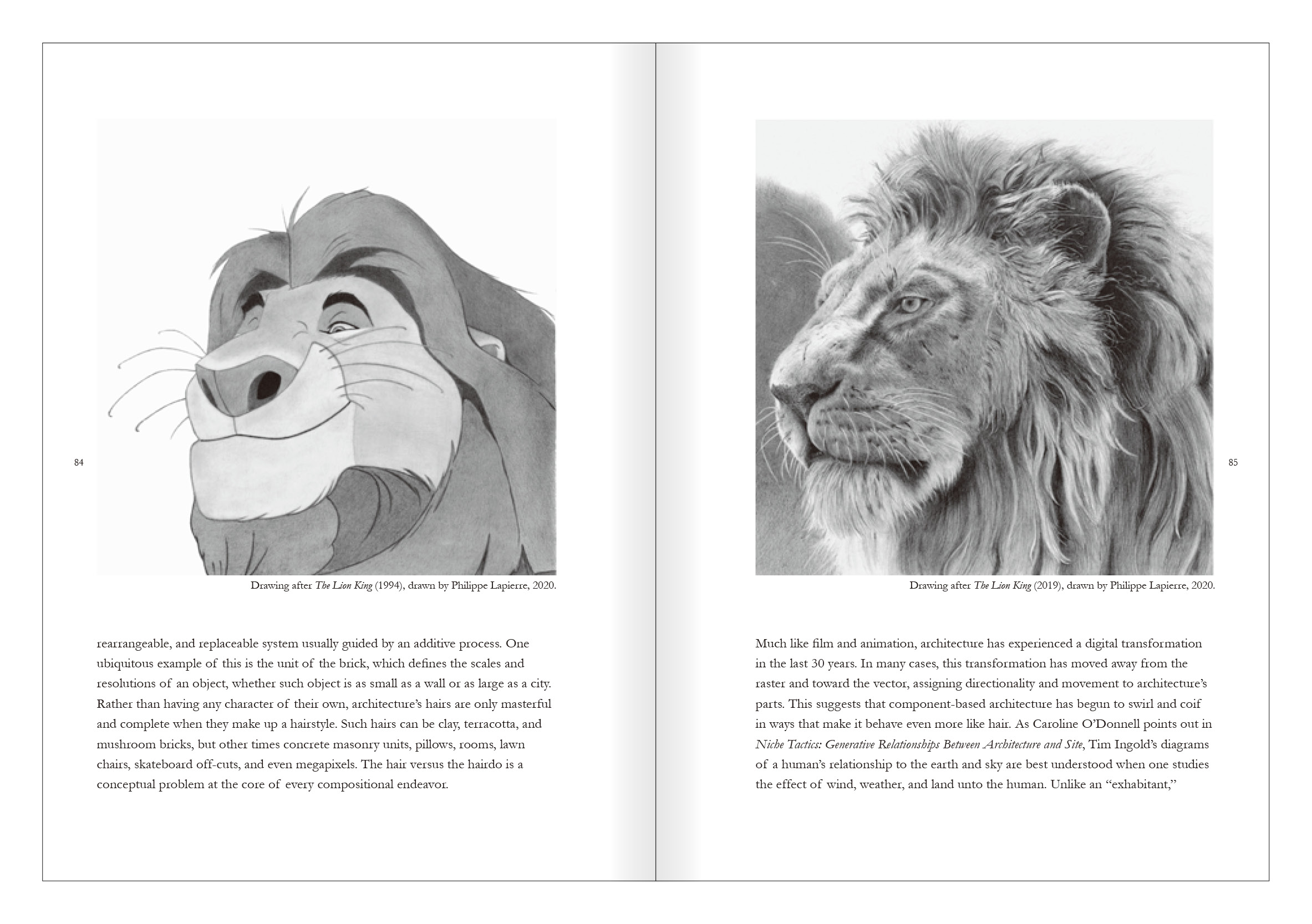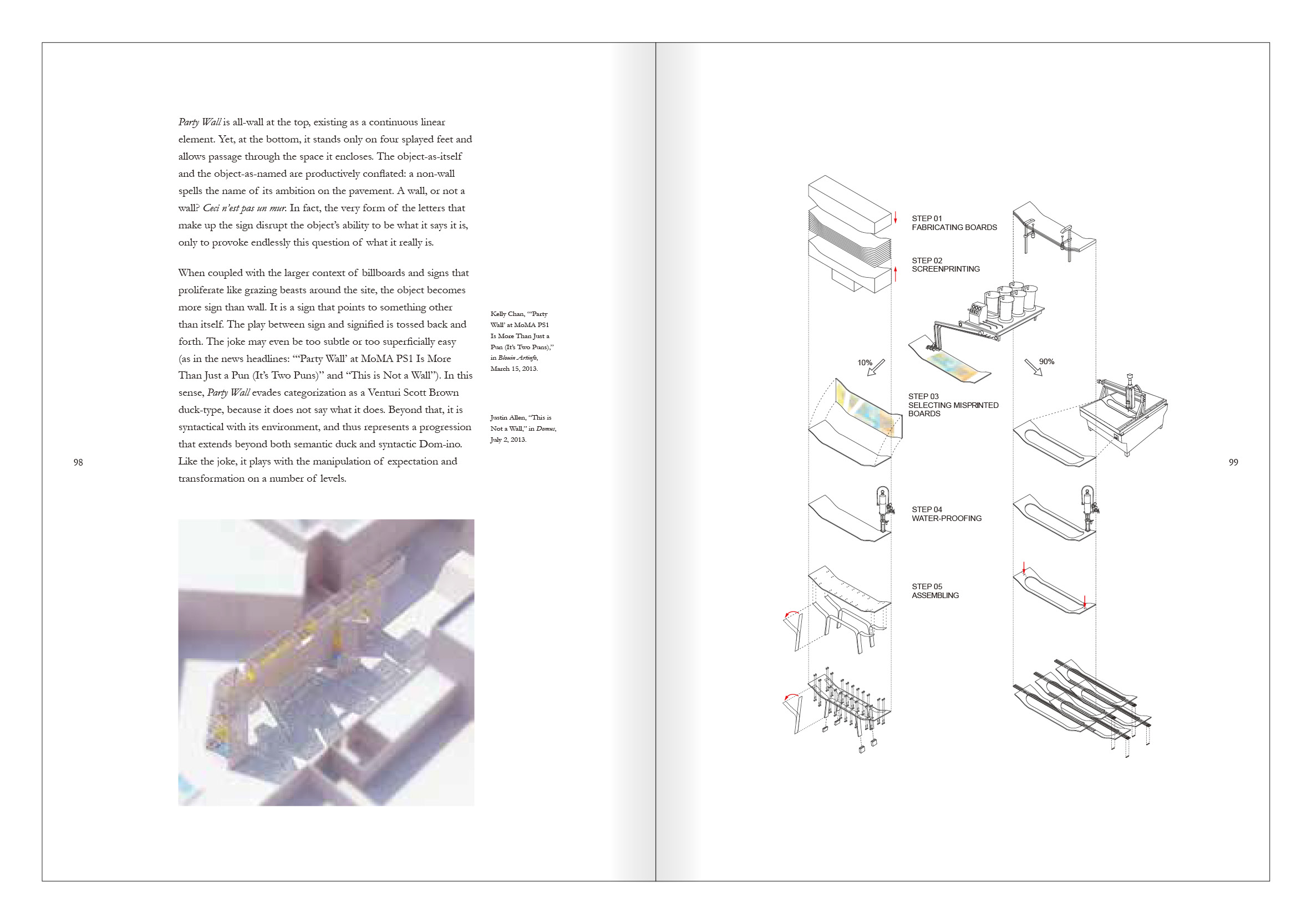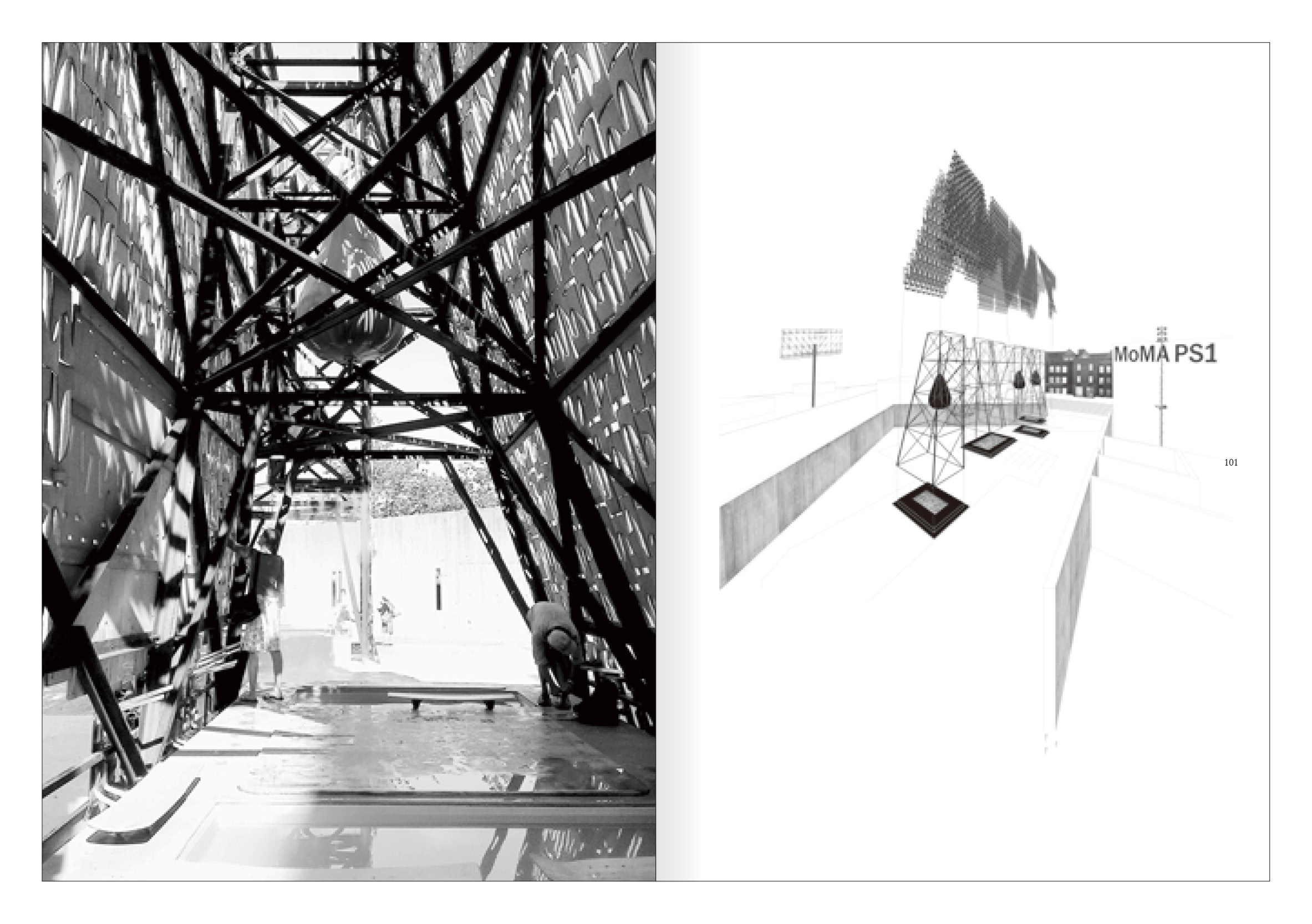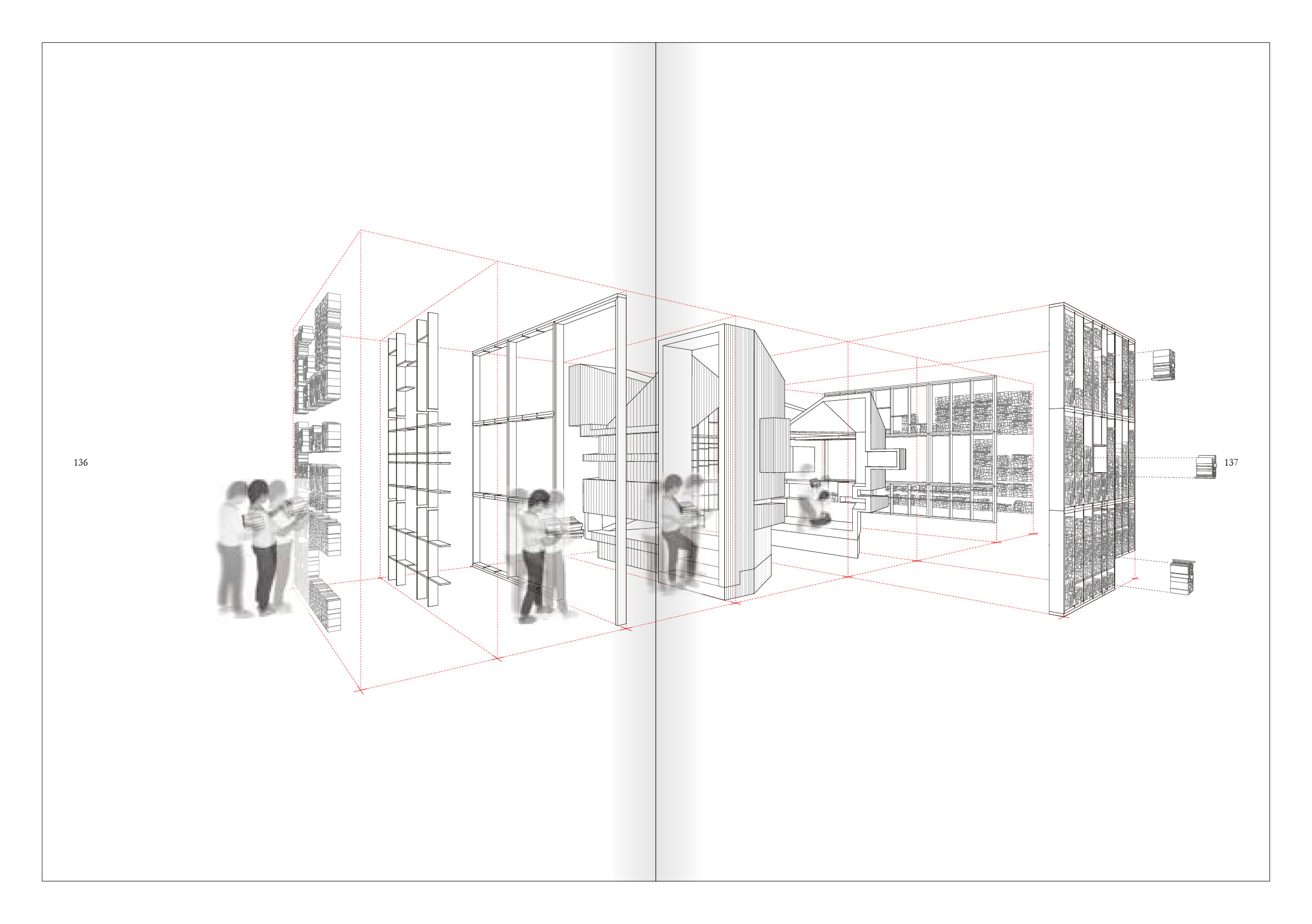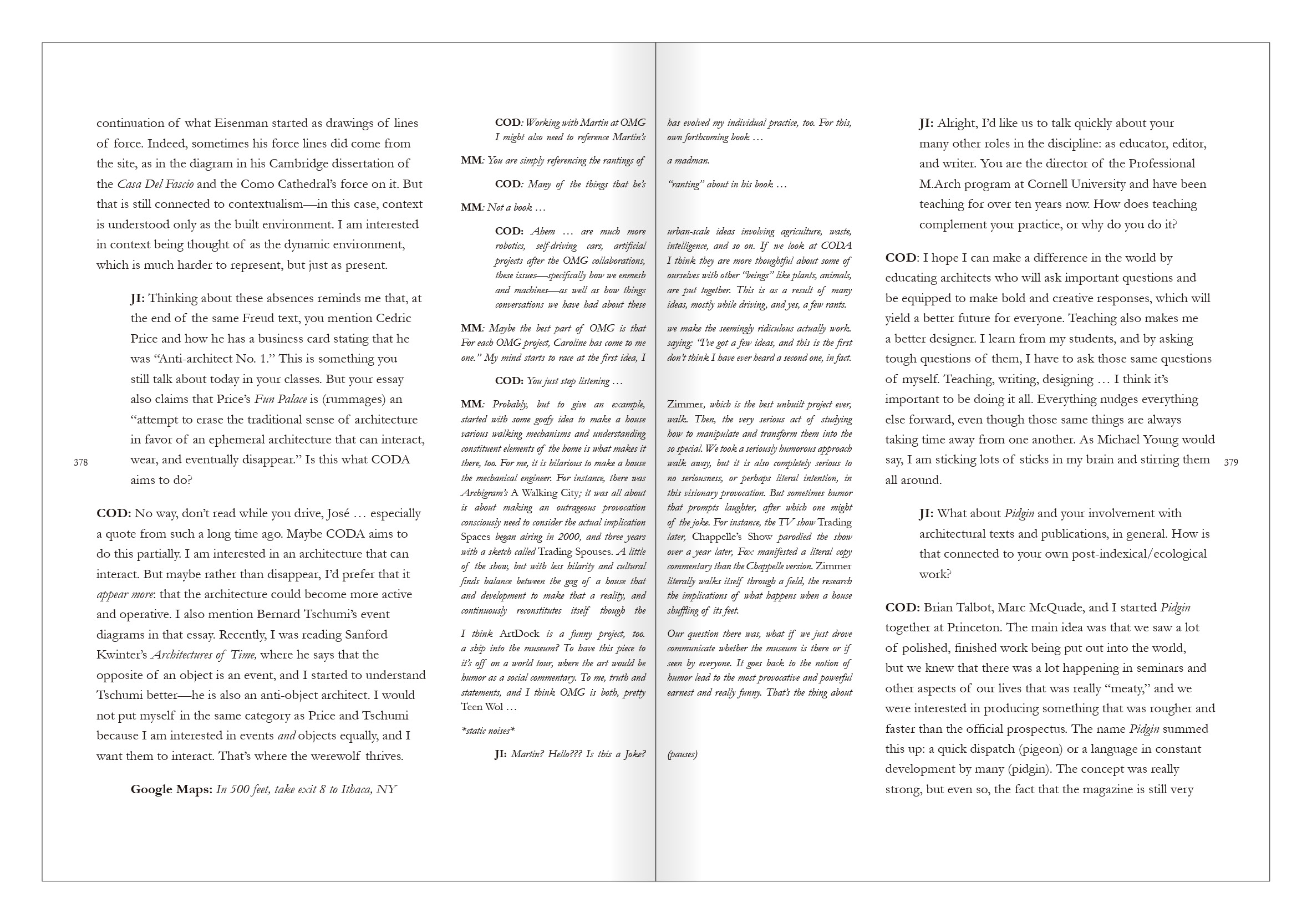As climate, culture, and technology evolve and become increasingly unpredictable, architecture’s stasis becomes more incongruous. This book explores an emerging but under-investigated branch of architecture that embraces the transformation of form, performance, and the responsiveness to environments and context. Typically considered to be a singular, solid, and fixed entity, traditional architecture has one perfect state. Yet, culture, climate, and technology are all dynamic and evolving systems with which buildings must interface. This type of architecture departs from the fixed figure of the Vitruvian man and moves toward a dynamic model that assumes changes of state, mutation, reskinning, and decomposition as conceptually fundamental.
Werewolf combines a series of architectural propositions and critical essays to expand on the architect’s agency to address political, social, and environmental unrest today. The transformative figure of the werewolf lays out a way to reconsider problems in the Anthropocene by looking at architecture as potentially active and dynamic. Several renowned authors and designers explore issues of contextual responsiveness, materiality, form, and perception: Greg Lynn discusses mechanically dynamic architecture, Kari Weil addresses transformation in Kafka’s The Metamorphosis, Jesse Reiser delves into his transforming childhood toys, Spyros Papapetros investigates the lunar affect upon the discipline, Jimenez Lai explores the material logics of furry objects, and Martin Miller unpacks the digital craftsperson.
Aside from examining built precedents from the twentieth century, editors Caroline O’Donnell and José Ibarra situate this body of work in the larger context of architecture, language, literature, the sign, the index, and new ecological world orders. This book also introduces a series of spirited experiments and forays into the world of transformation that look directly at werewolf theory. The entire collection is framed with a foreword and afterword by Peter Eisenman and Cynthia Davidson respectively.
Werewolf weaves together twentieth century architecture theory with the disciplines of perceptual psychology, robotics, and materials science. Reminding us that this post-humanist turn need not be merely a pragmatic shift that responds to climate instability, material shortages, and social unrest, this branch of transformative architecture can engage in and rejuvenate the heart of architectural practice and theory.
Publisher
Applied Research + Design, 2022
Collaborators
Caroline O'Donnell
Contributors
Cynthia Davidson, Peter Eisenman, Jimenez Lai, Greg Lynn, Martin Miller, Spyros Papapetros, Jesse Reiser, Kari Weil
Research Assistants
Xiaoxue (Iris) Ma, Meng Ma, Nicolas Leonard, Alexandre Mecattaf, Freddo Daneshvaran, Benjamin Zerrien
